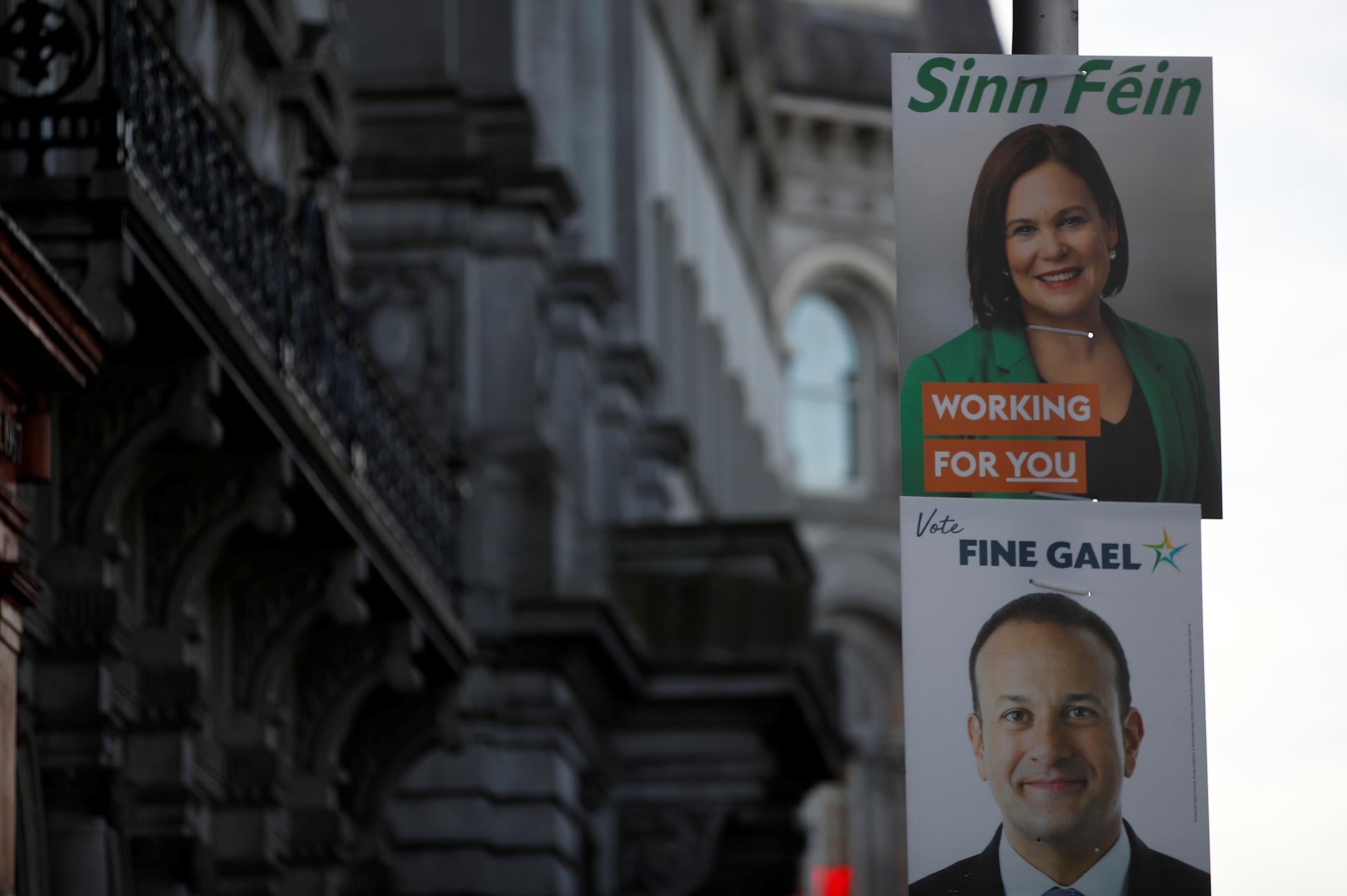Sinn Fein in poll position to alter 100 years of political consensus in Ireland
Analysis: The republican party may not determine next government, but its major breakthrough will shake Dublin’s established order
Your support helps us to tell the story
From reproductive rights to climate change to Big Tech, The Independent is on the ground when the story is developing. Whether it's investigating the financials of Elon Musk's pro-Trump PAC or producing our latest documentary, 'The A Word', which shines a light on the American women fighting for reproductive rights, we know how important it is to parse out the facts from the messaging.
At such a critical moment in US history, we need reporters on the ground. Your donation allows us to keep sending journalists to speak to both sides of the story.
The Independent is trusted by Americans across the entire political spectrum. And unlike many other quality news outlets, we choose not to lock Americans out of our reporting and analysis with paywalls. We believe quality journalism should be available to everyone, paid for by those who can afford it.
Your support makes all the difference.Ireland is going to the polls on Saturday in a general election which could throw up a result unlike any in the history of the state.
For nearly 100 years, Fianna Fail and Fine Gael have dominated the Irish political landscape. But long gone are the lofty heights of the 1980s, when they commanded more than 80 per cent of the national vote between them. Today, they’re lucky to get 50 per cent combined.
Sinn Fein has been growing rapidly in the few decades since it entered the Dail in Dublin, so much so that in recent years it has supplanted Labour as the third party.
But in the three weeks since taoiseach Leo Varadkar called this election, it has stunned the political establishment – and even itself – by leaping into joint first position with Fianna Fail, and then overtaking it altogether. The most recent poll placed it on 25 per cent, with Fianna Fail on 23 per cent and Fine Gael on 20 per cent.
This is a turn up for the books in a political system which still keeps Sinn Fein at arm’s length due to its historic association with the IRA. But anyone looking from the outside in might be less surprised to see that the party is increasingly appealing to the electorate.
For many, the centre-right Fianna Fail and Fine Gael have bled into one, not least because they have spent the past four years in a confidence and supply arrangement.
Sinn Fein offers a left-wing alternative which is speaking not just to its working class base, but increasingly to younger professionals, pensioners, and others who feel the big two parties have had long enough to solve major national issues like housing and health. Far from a “youthquake”, one poll found Sinn Fein was the most popular party among under-55s.
As for the party’s role in the Troubles, it is true that some younger voters don’t have memories of the pain inflicted by the IRA, but more so, it seems many who do remember are willing to move on, set that aside, and vote for a party which they believe is defending their economic interests. Even Irish reunification – that great raison d’etre of Sinn Fein – is growing increasingly popular among younger voters.
The problem for Sinn Fein is that it is only running 42 candidates for a parliament which needs 80 members to form a government. After tough local and European elections in 2018, this was a cautious move in a system where too many candidates can split the vote. It is also evidence of how blindsided it was by this sudden boost in popularity.
What this means is that it will not be in a position to lead the next government, but it could well be kingmaker – even if the two other parties are both refusing to countenance entering into a coalition with it. For Fianna Fail leader Micheal Martin, the IRA links recur as the biggest issue, while Leo Varadkar points out that his Fine Gael party is economically incompatible with Sinn Fein’s socialism.

This in itself has angered many voters, who feel the establishment is telling them who can and can’t enter government. Even the DUP has pointed out the hypocrisy of Dublin’s insistence that it shares power with the party in Belfast. All in all, these dismissals appear to have only increased Sinn Fein’s support further.
Some believe Fianna Fail could cave and take confidence and supply from Sinn Fein. There are fantasies of Sinn Fein rallying together a left-wing coalition with Labour, the Greens, the Social Democrats and more – but this is even more unlikely.
One more option is that Fianna Fail and Fine Gael do another confidence and supply between them, or an outright coalition. They are both reluctant to do this as it would only serve to further muddy them into one entity and, crucially, it would make Sinn Fein the official opposition. Effectively, Fianna Fail and Fine Gael have run out of room to exclude Sinn Fein from both government and opposition – something’s got to give.
For if there is one lesson from this campaign, it is that Sinn Fein can no longer be ignored. Even Fintan O’Toole, that measured voice of middle Ireland, wrote this week that it may be time for Sinn Fein to be brought in from the cold, and effectively accepted as a “normal party” by those who have remained suspicious of it two decades after the Good Friday Agreement.
Perhaps, to paraphrase a well-worn sound bite, its time has come.

Join our commenting forum
Join thought-provoking conversations, follow other Independent readers and see their replies
Comments